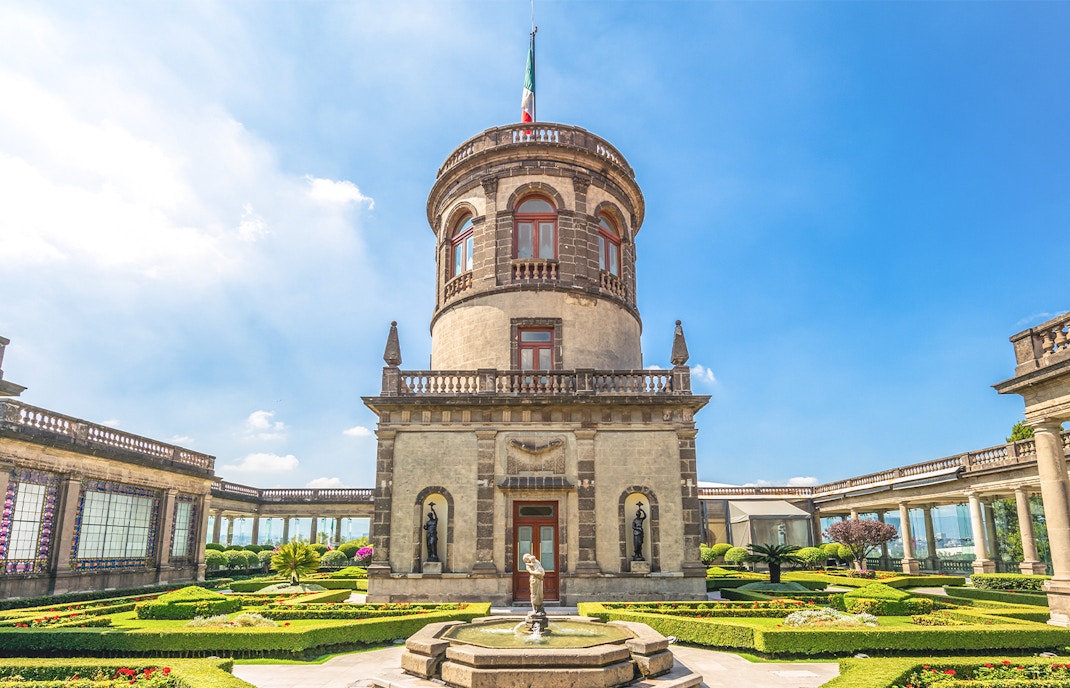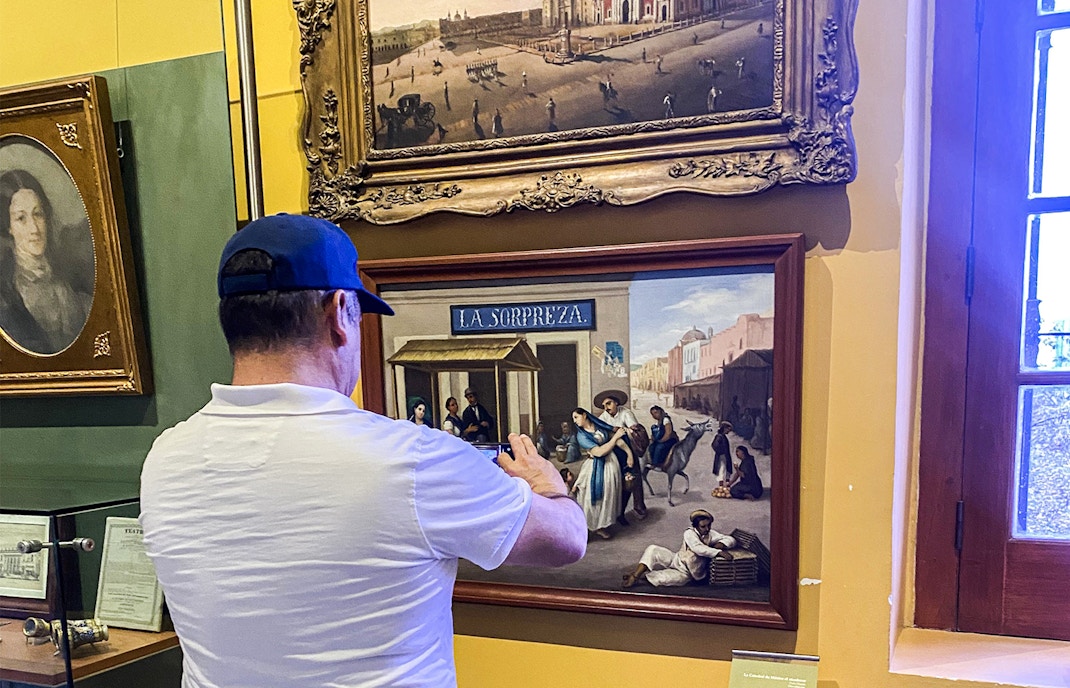- Open Tuesday to Sunday, from 9am to 5pm
- Last entry: Around 4:30pm
- Closed on Mondays
Rising over Mexico City from the wooded heights of Chapultepec Hill, the Chapultepec Castle is more than a historical landmark. It’s the only royal castle in the Americas that once housed emperors. Walk its echoing halls and you’re standing inside a living archive —of empires, revolutions, and a nation's rebirth.
Because this castle is layered. Chapultepec Castle has stood here since 1785, first as a retreat for viceroys, later transformed into an imperial residence by Emperor Maximilian I, and finally, into the National Museum of History. Every arch, corridor, and courtyard carries the imprint of political shifts and cultural evolution.
The views are not simply scenic. From the castle terraces, you can see the Paseo de la Reforma stretching all the way to the heart of Mexico City. On a clear morning, the skyline folds into the distant mountains. This isn’t a backdrop—it’s a reflection of how far the nation has come.
Inside, the Throne Room still holds the elegance once meant to command authority. The stained-glass windows along the main stairwell depict Mexico’s heroes in full color. And tucked within the old palace are murals by artists like Orozco and Siqueiros that do not decorate—they confront.
Preserved with gold accents, velvet drapes, and imperial mirrors, this was where power once sat. It reflects European influence adapted for a new world empire.
Life-sized stained-glass panels line the staircase, each depicting historical Mexican figures. The light filtering through creates a cathedral-like effect that feels reverent rather than decorative.
The furniture, paintings, and layout remain faithful to the Austrian ruler’s brief but impactful reign. It gives you a rare look into 19th-century royal life on this side of the Atlantic.
Empress Carlota’s quarters are still adorned with delicate French furnishings, showing her taste and the influence she brought from Europe to Mexico.
These aren’t just ornamental—they were designed to mimic European palace courtyards while overlooking the Mexican valley. They offer sweeping views of Mexico City and Bosque de Chapultepec.
They frame panoramic views, designed not for flair but for positioning the imperial gaze across the city—symbolic, strategic, and beautiful all at once.


Plan your visit like a pro. Chapultepec Castle sits on a hilltop, inside one of the largest city parks in the world. It’s beautiful, but it also means logistics matter. These tips will help you avoid crowds, long lines, and confusion.
It’s perched atop Chapultepec Hill, inside Bosque de Chapultepec, the massive urban park in Mexico City. The closest metro station is Chapultepec (Line 1). From the park entrance, it’s about a 15 to 20-minute uphill walk to the castle.
The castle is open Tuesday to Sunday, from 9am to 5pm. Last entry is usually around 4:30pm. It remains closed on Mondays, like most museums in Mexico City.
Yes, self-guided visits are allowed. However, tours in English or Spanish are available and recommended if you want context on the museum exhibits and the castle’s imperial history.
The walk uphill is not accessible by wheelchair, but the tram near the base of the hill can take you up. Inside the castle, not all areas are wheelchair-accessible due to staircases and historic flooring. Some sections have ramps and lifts, but access is partial